To describe Indonesia’s countless islands in one giant swoop is virtually impossible. They are as versatile as they are numerous. Bali often deservedly garners high praise, but many travelers never venture beyond the island paradise or neighboring Lombok. One of Indonesia’s 17,508 islands is Sulawesi, the oft-unvisited island that lies just below the Philippines, nestled between Indonesian Borneo and the Maluku Islands.
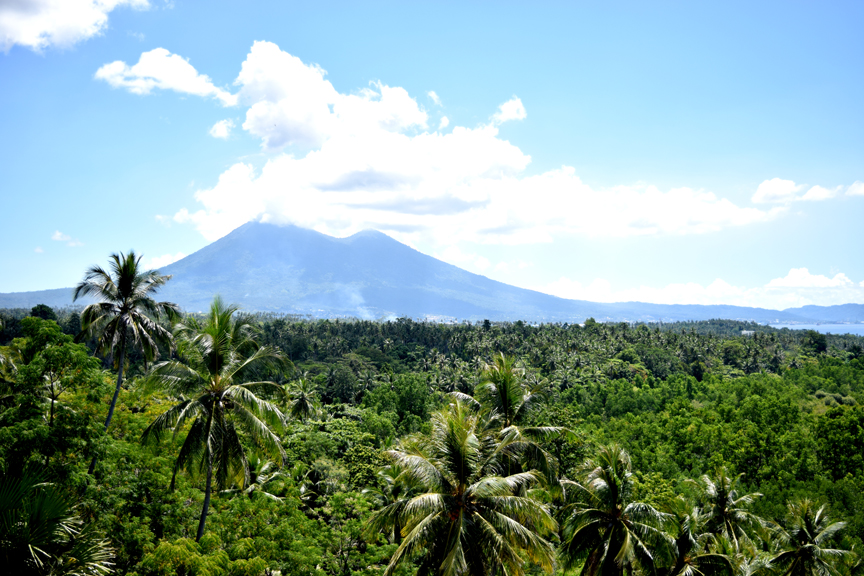
Sulawesi is a unique K-shaped island comprised of three plates, its geographical features creating diverse landscapes from rainforests, highlands and valleys to unpopulated beaches and acres upon acres of reefs attracting divers from the world over.
Don’t let the island’s skinny peninsulas fool you – Sulawesi is the world’s 11th largest island, and its northern and southern cultures could not be more different. In North Sulawesi alone, three main tribes exist – Minahasan, Gorontalo and Bolaang Mongondow – along with many others from varying parts of Indonesia, each with its own language.
Manado
Manado is the largest city in North Sulawesi with a population of approximately 500,000. Home to one of the world’s most famous diving spots, Manado is characterized by dramatic volcanoes and azure waters that enclose the bustling city. This traditional trading city on the tip of North Sulawesi has been colored by centuries of trade, particularly influenced by the Dutch. It is still apparent today in the memorials, architecture, language and even ethnicity of the locals.
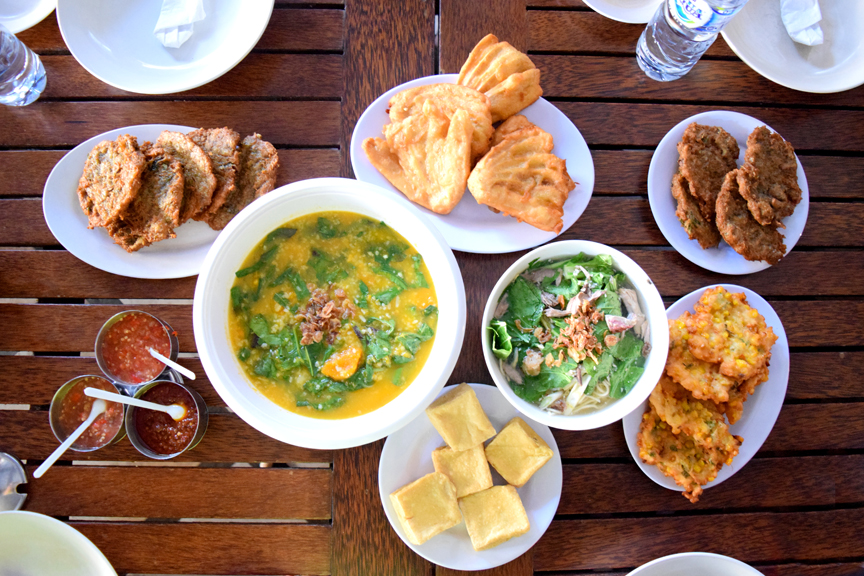
The roads are filled with horse-driven carts and minivans without doors and windows providing natural air conditioning. Many are the same shade of sky blue required for any form of public transportation in Sulawesi. On early mornings, local markets sell fresh fish, fruit and, if you’re daring enough to try, an exotic line-up of local delights including dog, forest rats and bats.
“We like to say people from Manado will eat anything with four legs except the table, and anything with no legs except a plane,” Wiro, a local guide, jokes. Meat, vegetables, and fruits are abundant, and nearly every meal includes some sort of seafood.
A little south of Manado, with arms outstretched, stands Kristus kase Berkat (Christ Blessing), the world’s fourth largest (and Asia’s second largest) statue of Jesus. Manado, unlike predominantly Muslim Indonesia, is 62 percent Christian with Protestant churches and Catholic cathedrals found on nearly every street.
Completed in 2007, this statue was made by Ciputra, an Indonesian real estate mogul, and one of the country’s wealthiest men. It is part of a development called Citraland that includes a miniature waterpark and a slew of bizarre, life-size alabaster figurines of angels and animals.
Island Escapades

Manado’s most notable diving spots are found around the nearby islands of Manado Tua, Bunaken and Siladen. Ferries leave from Manado Harbor or the private Marina Plaza Harbor and take about an hour.
Manado Tua is a volcanic cone island that rises 764 meters out of the seas. The earliest residents of Manado, the Minahasa tribe, originated from Manado Tua, directly translated as “Old Manado,” but had to move to the Sulawesi mainland in the 16th century when they ran out of fresh water.
Today, nearly 1,000 people live on Manado Tua. If you want to take a break from diving, there is a pleasant twohour hiking trail up the volcano and plenty of real estate for mountain biking. Currently, there are no hotels in Manado Tua, but camping is allowed if you report to the local city police and Manado Tua village head.
Boomerang-shaped Bunaken and the smaller Siladen, Manado Tua’s low-lying neighbors, have many great diving and snorkel spots. They are also good places to set out for the main diving attraction, Bunaken National Park, one of Indonesia’s first marine parks. Accommodation on the islands range from inexpensive backpacker lodges to luxurious spa resorts.
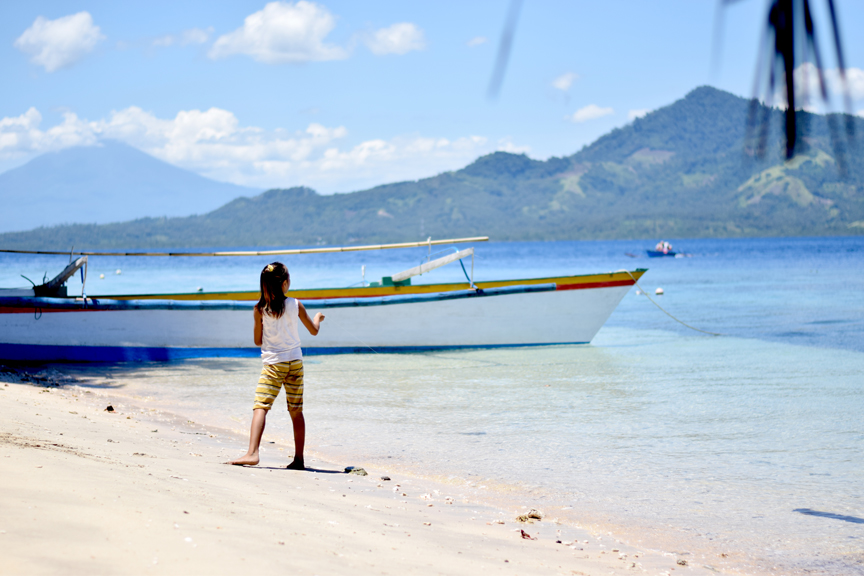
It was low tide when our boat arrived at Bunaken, so we parked a little farther out and then came ashore and jumped into a cart attached to a moped and headed through the village. It was noon, yet kids were getting out of school for the day. A crowd of shy but curious school kids gathered around to look in my camera at the photo I had just taken.
English is not taught in public schools here. The majority of locals speak two languages: Bahasa Indonesia and their ethnic tongue. The children, however, had us laughing as they practiced Japanese words they picked up from TV (“Ninja!” “Karate!” “Anime!”). They were soon off for a quick dip in the ocean and a game of soccer before returning home to help with fishing or preparing dinner.
We spent the next few hours snorkeling around Bunaken’s famed reef walls. While the view of the blue skies and sloping mountains mirrored in water is surreal, it does not compare to the underwater landscape. Healthy coral of every shape and color thrive along the wall where the ocean floor drops into oblivion, while schools of parrotfish, angelfish and gobies feed off the reef.
More experienced divers can take a boat to spots teeming with barracudas, rays, lion fish, reef sharks, eels and penyu (sea turtles). Dolphins can also be seen on early mornings in deeper parts of the ocean.
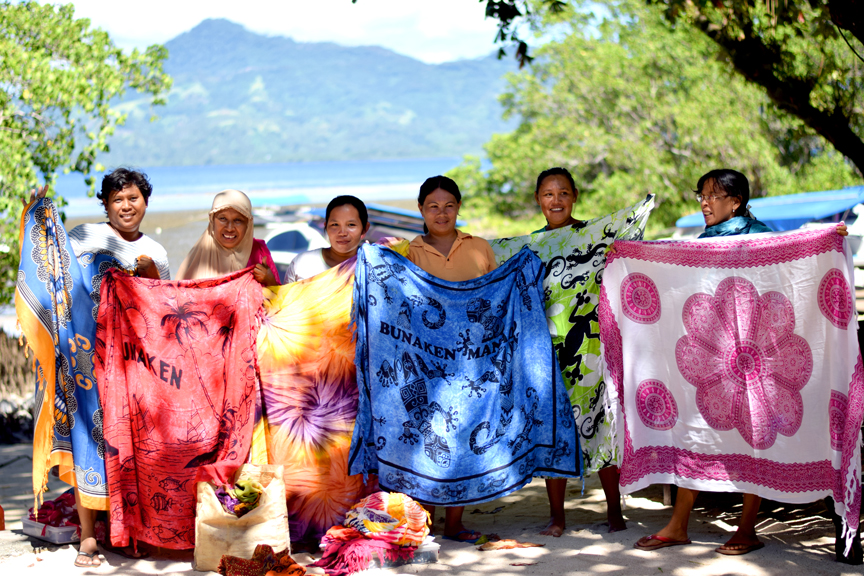
As dusk draws near, it is time to get back to the city. Our skin glows from the day’s golden rays as we sip fresh kelapa (coconut) on the ferry. When strong waves make the going slow, an ever-optimistic local says, “No worries, we have time to enjoy the sunset.” Forgetting the frenetic city life I left behind, I slip into this Sulawesi “rubber time” when minutes stretch out so we can take it all in.
Jungle Life
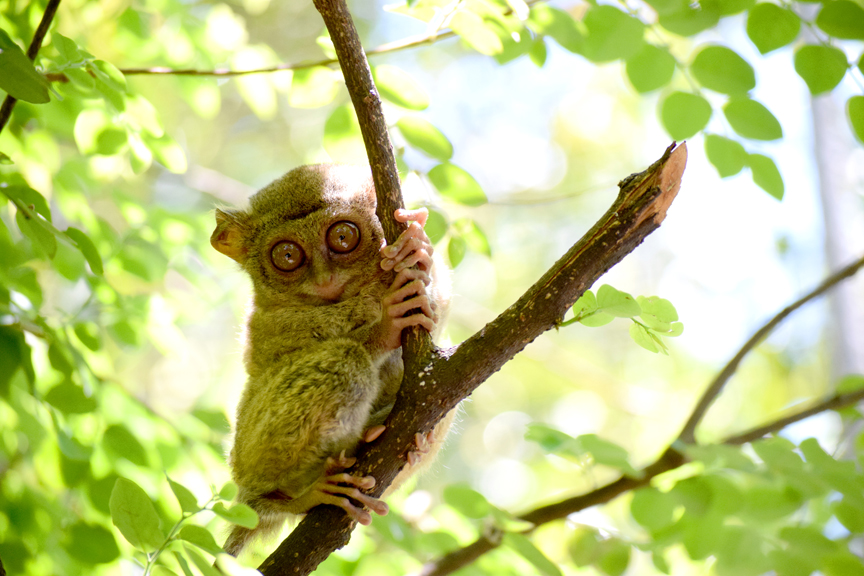
One of the first things you see when you exit Sam Ratulangi International Airport is Manado’s mascot, the almost extinct Tarsius tarsier. The world’s smallest monkey, which can only be found in Sulawesi, stands four inches tall with big bulging eyes. It is physically incapable of moving its eyeballs so has to turn its head a complete 180 degrees just to look around.
An hour east from Manado lies Bitung City’s Tasikoki Wildlife Rescue Center, 55 hectares of land dedicated to protecting Indonesia’s flora and fauna from illegal wildlife trade, deforestation and hunting.
The organization restores the health of rescued orangutans, sun bears, gibbons, cockatoos, babi rusa pigs, Sulawesi macaques, hornbills, lorises and more, nurturing them back to health with the hopes of releasing them back to their natural habitat. Volunteers can stay here at Wisma Tangkasi lodge for a donation.
The rescue center is at the southernmost tip of Lembeh Strait which divides the Sulawesi mainland from Lembeh Island. It offers a different view altogether from the west coast with its rich black volcanic sand and rare marine critters, making it a world-class muck diving destination.
There are a few shipwrecks including a Japanese freighter from World War II that divers can explore.
Nearby Mt. Klabat, the highest peak in North Sulawesi at 1,995 meters, is popular for sunrises and sunsets. It is six hours up and four hours back, and hikers should watch out for slides and slippery slopes when it rains.
Although the beachside Rusa Zoo is a convenient place to see tarsier, babi rusa, and Sulawesi bear cuscus, as well as primates, deer, snakes and crocodiles, it was disheartening to see endangered wildlife staring vacantly back from behind bars rather than living free in their paradise home.
It’s further proof that supporting the Tasikoki Wildlife Rescue Center and Tangkoko Batuangus Nature Reserve farther north is so important.
Highlands to Fast Water
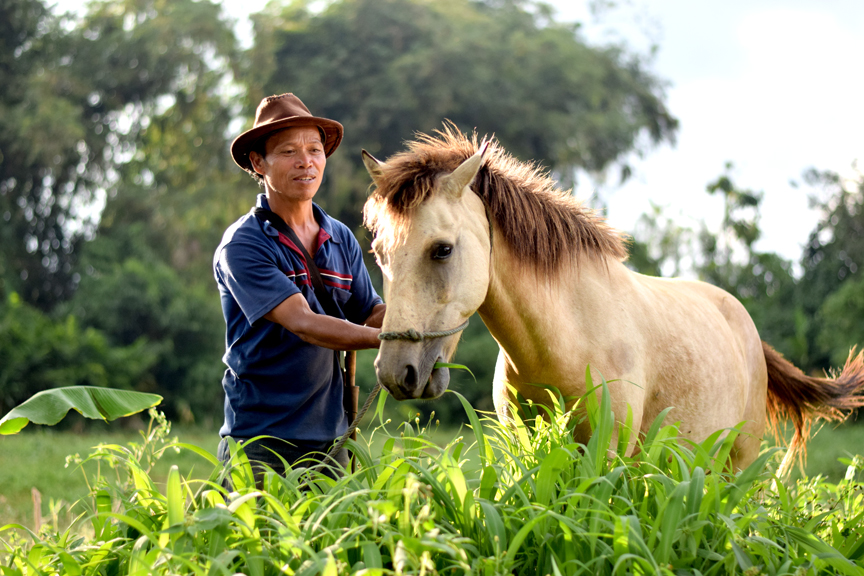
Sitting at 700 meters above sea level between Mt. Lokon and Mt. Mahawu, Tomohon is part of the Minahasa Highlands and is generally cool and rainy compared to Manado. The serpentine drive to the highlands takes an hour from Bitung City and is a stark contrast to Manado’s sunny, dry climate.
Mineral-rich natural hot springs from the volcanoes bubble up from the ground. The three main lakes in the area include Lake Tondano where you can enjoy boating and watching local fisherman ply their trade and then dine at one of the shoreside restaurants. Lake Mahawu is another crater lake at the peak of 3,333-meter Mt. Mahawu. Lake Linow, an ancient sulfuric crater lake, changes colors from time to time from red to green to blue, due to the chemicals and hot gases in the water. Pedal boats, kayaks and canoes are available for hire.
The Highlands’ mountains, jungles and valleys have numerous hiking trails. The humidity and constant rain from the peaks create majestic waterfalls such as the intense Tinoor Waterfall at the base of Mt. Empung and the twin Kali Falls where visitors can cool off in the pool below. Many take photos from the nearby bridge. Mt. Lokon has a family-friendly two-hour hike up the crater, and local operators such as Matahatikita and Manado Safari Tours can take travelers on full-day waterfall and walking tours.
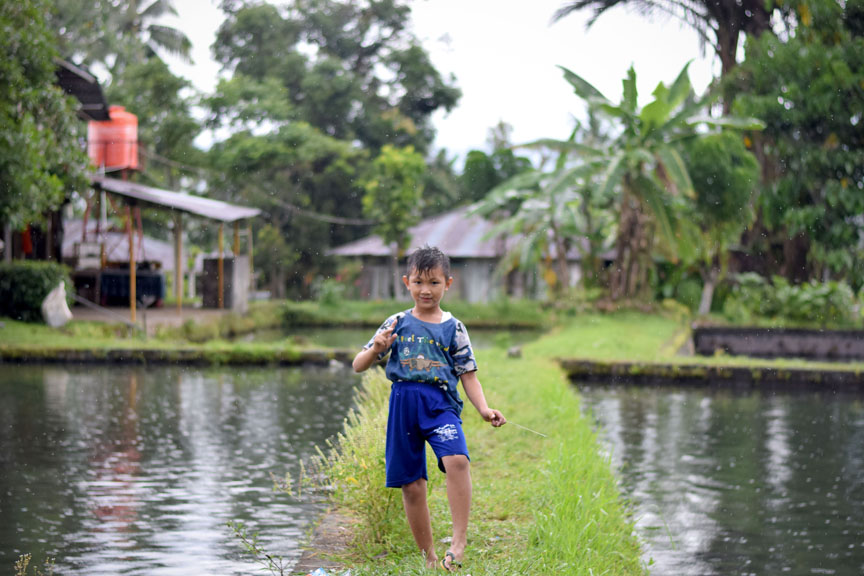
One of the best things about the constant rainfall is that every season is peak season for whitewater rafting. In Minahasa, you can race down the Nimanga River, a two-hour whitewater rafting journey starting at Timbukar Village and ending at Tangkunei. It is a grade 3 to 4 ride with adrenaline-surging rapids and flat waters where you can take in the wildlife that includes kingfishers and monitor lizards.
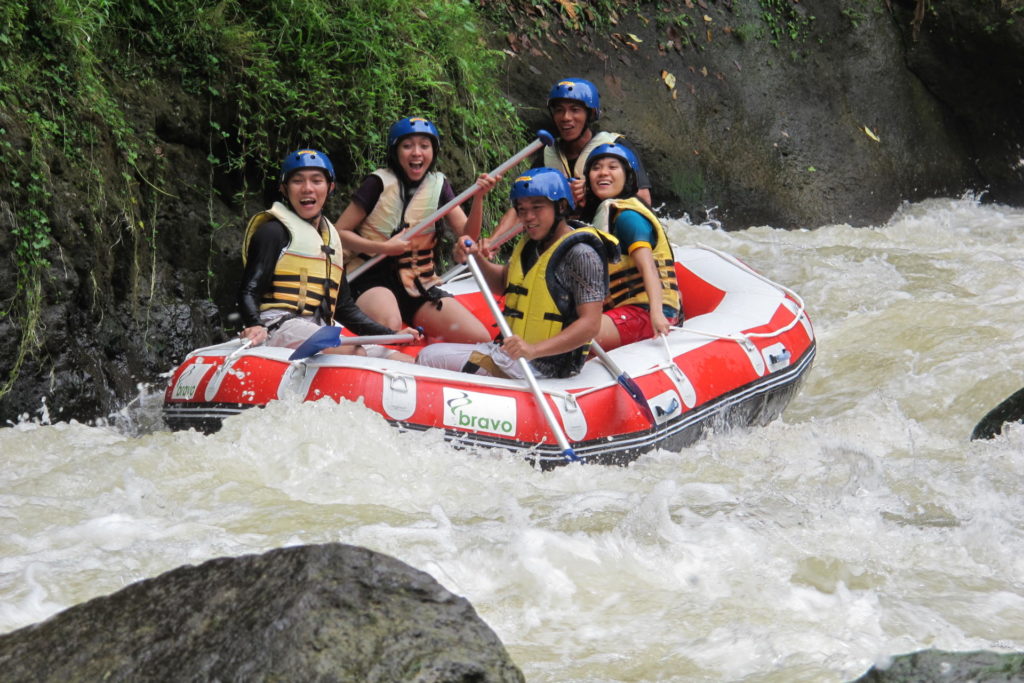
The Ranoyapo River is the longest river in North Sulawesi. Rafting tours range from three hours to two full days of whitewater action. A number of whitewater rafting operators, such as Waraney Adventure & W.W. Rafting and Manado Rafting, offer tours; however, you should always make sure they are a member of the Indonesian White Water Federation.
After enjoying the overflowing generosity of the people, nature and time as it slows down in this magical place, I can’t help but feel I’ve barely scraped the surface of what the diverse island has waiting for travelers. While my heart feels heavy, I am determined to return, hoping North Sulawesi will reveal even more of her secrets.
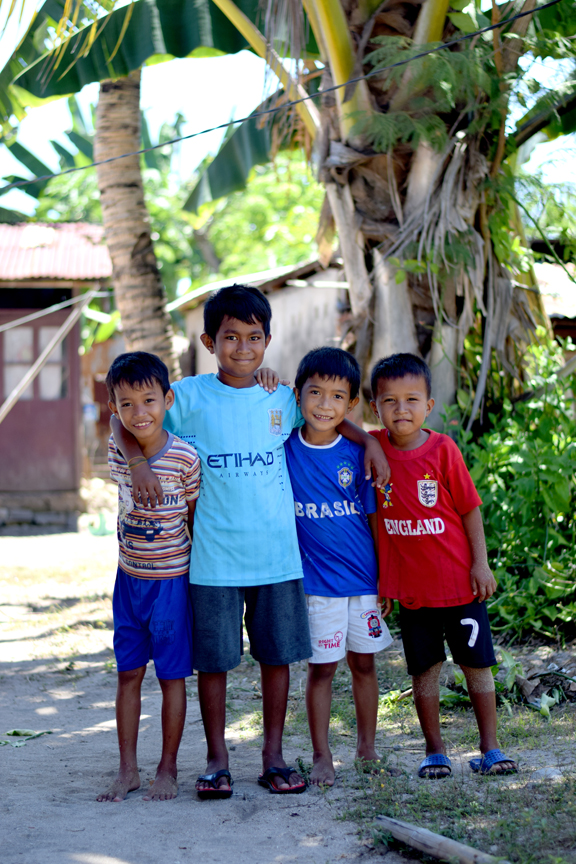
Getting There
To reach Manado, catch a flight to Sam Ratulangi International Airport, located 13 kilometers northeast of Manado. There are approximately eight flights a day from Jakarta to Manado which take about three-and-a-half hours. Regular flights from Jakarta, Bali, Surabaya, Singapore and Kuala Lumpur and Guangzhou are available.
Web: www.garuda-indonesia.com





